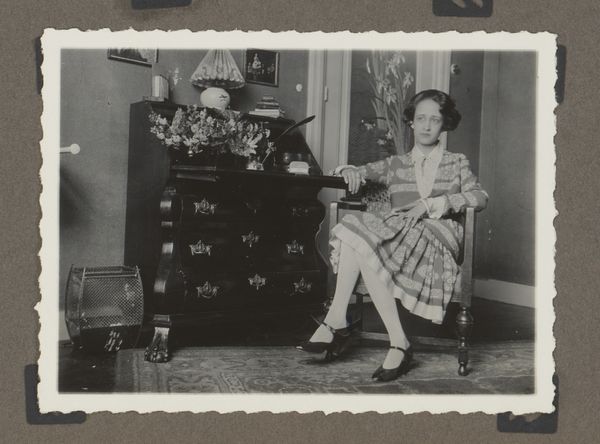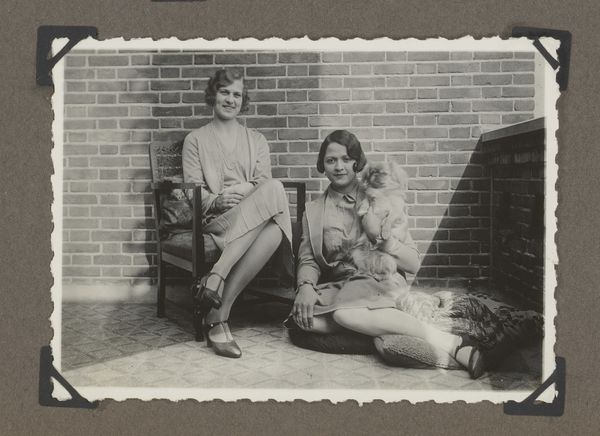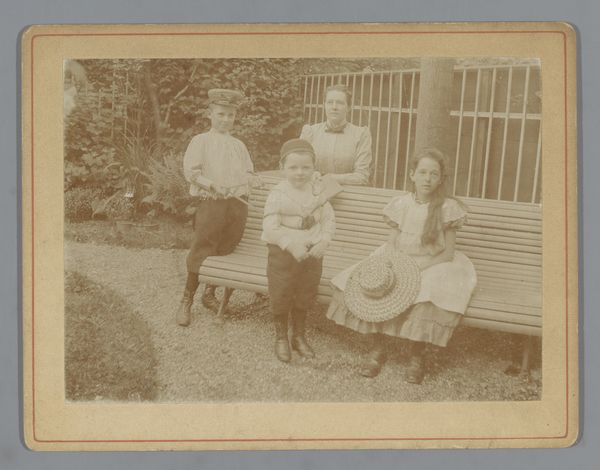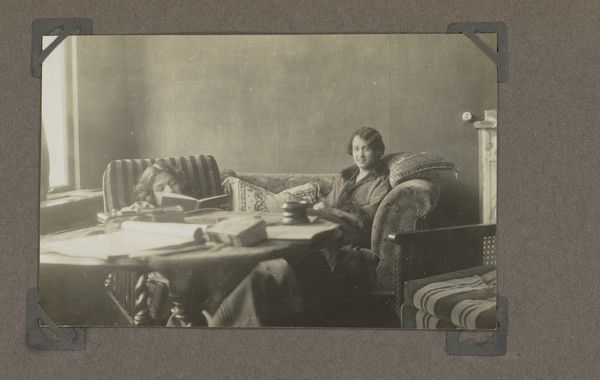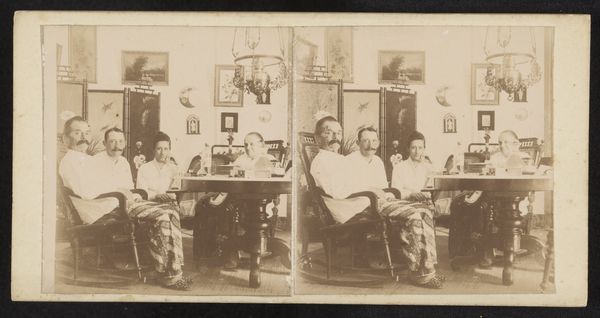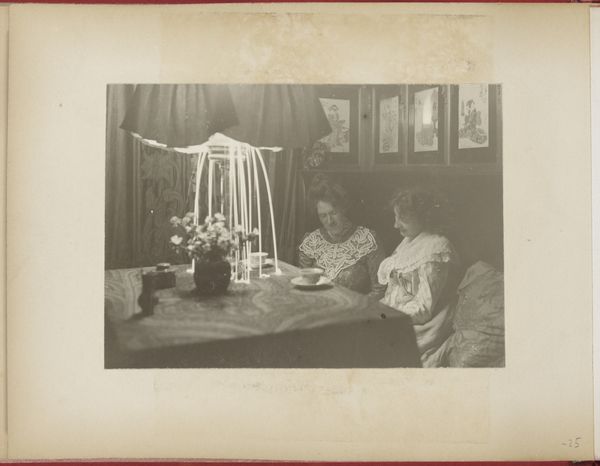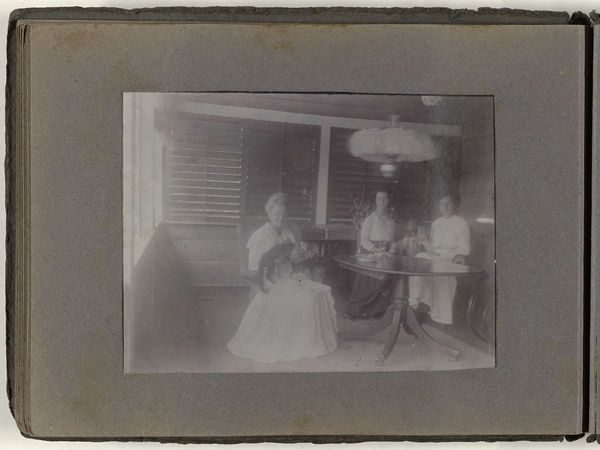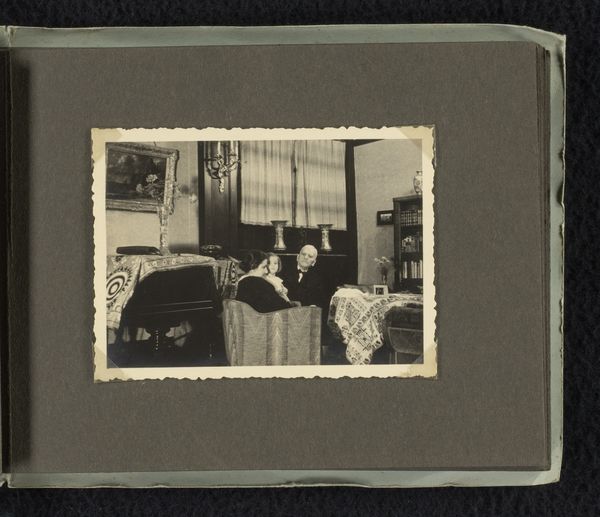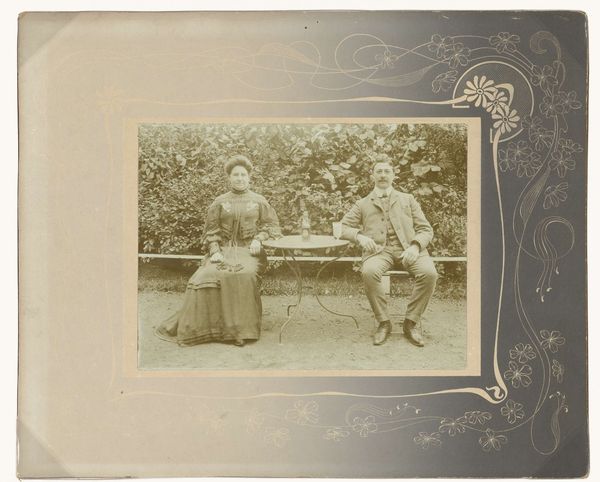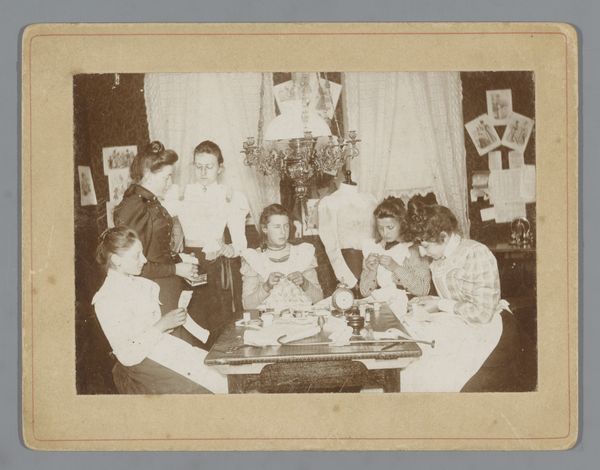
Wilhelmina en Dootje van Zijll de Jong en Henriëtte Wassink zittend aan tafel 1930 - 1935
0:00
0:00
Dimensions: height 81 mm, width 113 mm
Copyright: Rijks Museum: Open Domain
Editor: This gelatin silver print, "Wilhelmina en Dootje van Zijll de Jong en Henriëtte Wassink zittend aan tafel," created between 1930 and 1935, gives off a certain candid, yet posed, air. I am particularly struck by how much information it gives about the setting through its photographic clarity. How would you approach an interpretation of this work? Curator: As a materialist, I'm drawn to considering the social implications embedded in the very process of producing such an image. The gelatin silver print, a relatively accessible photographic method at the time, still hints at a certain level of economic access. What does this process and the materials it employs – silver, gelatin, photographic paper – tell us about the means and networks of production available to the sitter or commissioner? Do you see the work as art or rather documentation of social status? Editor: That's interesting. I hadn’t thought about the accessibility of the materials themselves as a form of commentary. Thinking about it now, in context of its date, the work appears to document social and cultural consumption: for instance, one sitter has a fur, another holds a cigarette. Curator: Precisely. Let’s also consider the labor involved. The crafting of their dresses, the lace tablecloth, the very staging of this tableau—all speak to a network of skilled workers, predominantly female, contributing to the creation and maintenance of a specific lifestyle and, therefore, to a statement of cultural capital. Editor: So, it becomes less about the three women, and more about what they represent through the material realities around them? Curator: Exactly. The image becomes a study in material culture and the complex power dynamics inherent in its production and consumption. What started as what we see as an ‘archive photography’ of ‘historical fashion’, in actuality, serves as an artistic record of historical means of production and power dynamics. Editor: I never thought about portraiture this way, in terms of material access and production. Curator: The image becomes more powerful by seeing it this way, wouldn’t you say?
Comments
No comments
Be the first to comment and join the conversation on the ultimate creative platform.
